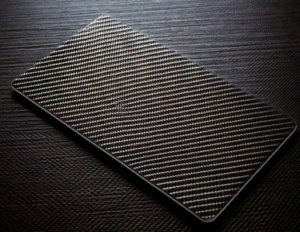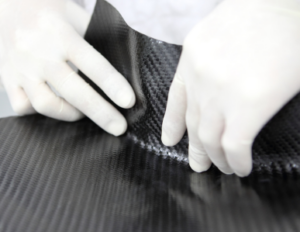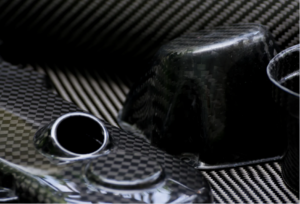
Did you know that the use of CFRP (carbon fiber reinforced plastic) is gaining attention in the automotive industry?
With the demand to improve fuel efficiency and reduce CO2 emissions by reducing vehicle weight, CFRP is expected to be a solution, and is being used in various vehicle models such as the BMW i3 and Lexus LFA.
This article provides an overview of CFRP utilization in automobiles.
We have summarized the parts used from structural materials to engine parts, their features, manufacturing costs, and issues in mass production, so please read to the end.
For more information about Taiga, click here.Table of Contents
More and more automobiles are applying CFRP

Recent years,The tighter environmental regulations and technological innovations facing the automotive industry have led to an increase in the number of vehicles to which CFRP is applied.
The demand for CFRP is currently increasing due to the need to reduce carbon dioxide (CO2) emissions and extend the cruising range of electric vehicles (EVs).
For example, CFRP is widely used in luxury and electric vehicles such as the BMW i3 and Lamborghini Aventador. In addition, with the development of CFRP mass production technology and cost reduction, CFRP is being adopted not only for luxury and sports cars, but also for mass-market vehicles.
Areas where CFRP is used in automobiles
CFRP is used in various parts of automobiles. Here we will introduce four of the main areas where it is used.
| parts | use | Features & Benefits |
| structural member | Monocoque body, crash box structure | Lightweight and high strength, improved collision safety, and greater design freedom |
| panels, planks or plating on the hull of a ship or aircraft | Roof, hood, fenders, spoiler | Lighter weight, greater design freedom, and the ability to mold complex shapes |
| interior | Seat frame, instrument panel | Lighter weight, higher strength, greater design freedom, and a sense of luxury |
| power system | Wheels, springs, plate springs, dampers, propeller shafts, transaxles, battery cases | Lighter weight, higher strength, improved performance, better fuel economy |
structural member

CFRP is a member that forms the basic structure of a car body and is used as a structural material.It is mainly used in monocoque bodies and crash box structures.
- Monocoque body: A structure that combines the outer body and the inner framework of an automobile into a single structure to maintain sturdiness and strength.
- Crashbox Structure: A section designed to enhance the crashworthiness of a vehicle.
CFRP was mainly limited to parts for luxury and sports cars, but is now increasingly being used in general-purpose vehicles.
panels, planks or plating on the hull of a ship or aircraft

CFRP is also used for exterior panels, the parts that form the exterior of a car body.The main areas of use are roofs, hoods, fenders, and spoilers.
Because CFRP can be molded into complex shapes, its use in automotive exterior panels allows for greater design freedom.
interior
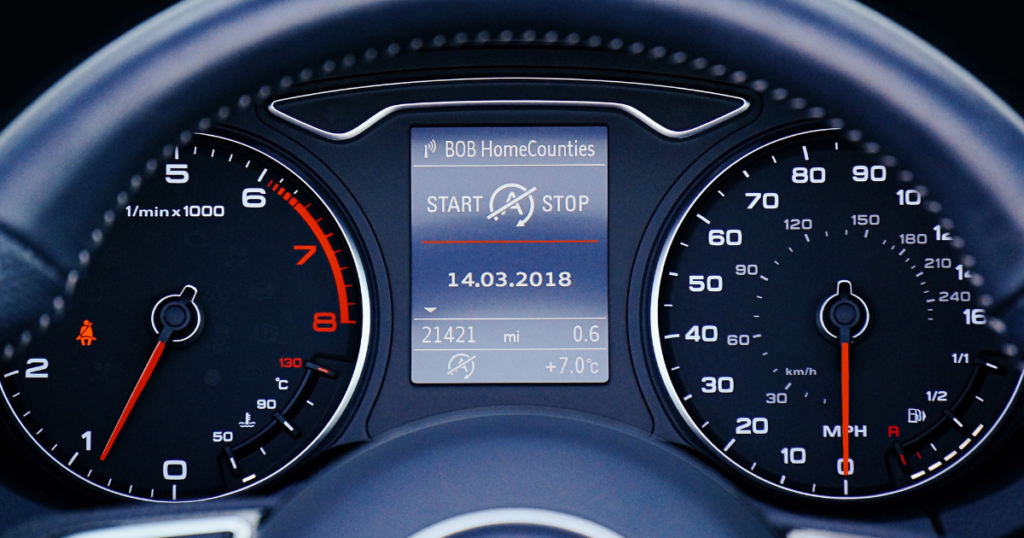
CFRP is also used for automobile interiors.Examples include seat frames and instrument panels.
CFRP is lightweight yet has high strength, so its use in automobile interiors contributes to improved fuel efficiency and driving performance.
It also offers a high degree of freedom in design and is suitable for manufacturing parts with complex shapes, which can create a sense of luxury.
power system
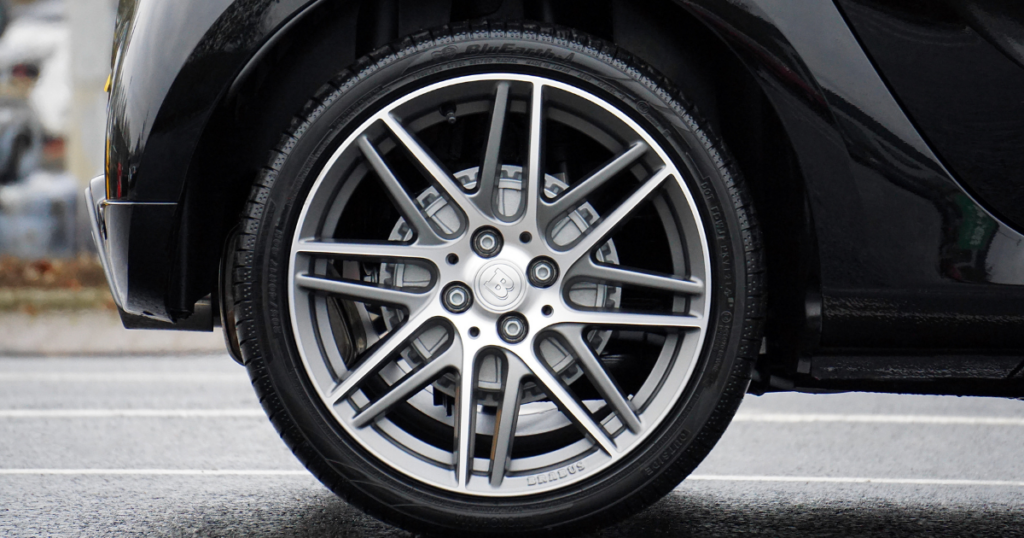
CFRP is also used as a component around engines and in powertrains.These are mainly wheels, springs, plate springs, dampers, propeller shafts, transaxles, and battery cases.
Since CFRP is lighter and stronger than metal, its use as a power system can be expected to improve vehicle performance and fuel efficiency.
Specifically, it is said that automobiles made of CFRP can be 50% lighter than those made of metal.
Why CFRP is used in automobiles
CFRP is used in automobiles for the following four reasons
- Lightweight
- stability
- corrosion resistance
- Design flexibility
Lightweight
One of the reasons CFRP is used in automobiles is its "lightness.
CFRP is much lighter than metal, weighing only about 60% of aluminum alloys. This lightness reduces fuel consumption of automobiles.
In fact, when the back door was changed to CFRP, we succeeded in reducing the weight by approximately 401 TP3T compared to the conventional aluminum back door.
stability
CFRP is used in automobiles because of its unusually light weight yet high strength.
Carbon fiber, the material of CFRP, has a fine thread-like structure and is said to be about 10 times stronger than steel. As a result, it is lightweight yet impact-resistant, and is used in important parts such as car bodies and components.
The use of CFRP improves resistance to external impacts, thus achieving high crash safety performance.
corrosion resistance
CFRP is also less susceptible to corrosion than metal, which is another reason why it is used in automobiles.
CFRP is a material that does not deteriorate easily in rainy or humid environments, making it easier to last longer than metal and allowing for a longer period of reliable use.
In addition, the lack of corrosion reduces the need for repairs and parts replacement, which in turn reduces maintenance costs.
Design flexibility
One of the reasons CFRP is used for automotive parts is that it can be made in any shape.CFRP offers greater design flexibility than metal, and even parts with complex shapes can be made easily.
This allows for smooth prototyping and improvement of new parts and shortens the time to complete products.
Furthermore, CFRP can reduce the number of parts because it can make parts with complex shapes into one. As a result, assembly operations are simplified and production efficiency is increased.
Points to keep in mind when using CFRP in automobiles
While CFRP has excellent performance in terms of light weight and high strength, there are several points to be considered when using it, such as the difficulty of processing and high cost.
Here are two points to keep in mind when using CFRP in automobiles.
- High price
- not suited for mass production
High price
CFRP is expensive because its main ingredient, carbon fiber, is expensive, and its price is correspondingly higher.
In addition, making CFRP requires special, expensive equipment, and storing the material is costly. This also increases the cost of processing and molding, causing overall manufacturing costs to rise.
Currently, the demand for carbon fiber is increasing, and there is a move to reduce costs through mass production, but it is difficult to significantly reduce the price of CFRP compared to metal.
not suited for mass production
CFRP is not suitable for mass production because the manufacturing process is complex and time-consuming, and requires expensive equipment.
In addition, since it cannot be reused as easily as metal, the cost of disposing of waste and environmental considerations are also issues, making it a disadvantageous material for mass production.
For this reason, CFRTP (carbon fiber reinforced thermoplastic resin), which requires much less molding time than CFRP, is being developed.
Summary
In this article, we have explained in detail the vehicles to which CFRP is applied, the areas where CFRP is used in automobiles, and the reasons why CFRP is used in automobiles.
CFRP is increasingly being used in the automotive industry in various vehicle models to meet the demand for improved fuel efficiency and reduced CO2 emissions by reducing vehicle body weight.
It is attracting attention for its characteristics of being lighter than metal, yet stronger and more corrosion resistant.
Note, however, that they are expensive and not suitable for mass production.
Taiga responds to challenging component manufacturing
Taiga offers the best design and manufacturing methods for complex shapes and new parts using a variety of technologies, including sheet metal, CNC machining, and 3D printing.
We can also accommodate prototyping and research purposes, and can attempt to manufacture products utilizing the materials we have developed. We provide new value for parts and products by utilizing our cutting-edge technology and experience.
If you are considering manufacturing parts utilizing CFRP, please contact us!Taiga."Taiga is a free service that allows you to consult with experienced contractors.
We can efficiently proceed with the development of difficult or new parts, small-lot production, prototyping, and mass production while keeping costs low.
For more information about Taiga, click here.
 0120-987-742
0120-987-742